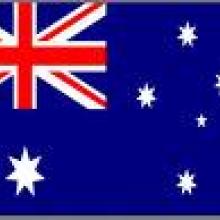
Unreliable geographies by Aeneas McHaar
No. 3: Broughton Island, New South Wales, Australia
32º 35’ S, 152º 20’ E
A low, scroggy outcrop of rock, Broughton Island is roughly 1.5 miles wide and long. It wallows in the Pacific off the coast of New South Wales.
Fresh water drains from its swamps. There’s an abundance of noisy mutton-birds, silver gulls and fairy penguins, and quieter seafood. Snowy-chested sea eagles patrol above the waves, supposedly 32ft-long pointer sharks and banded wobbegongs below them. ‘All in all,’ comments one archaeologist, ‘it is ... eminently suitable for castaways.’
The island is named after Captain William Broughton, commander of the Chatham, who passed by on Vancouver’s expedition to New Zealand, Hawaii and the NW coast of Canada (1791–95).
However, there were certainly earlier visitors. Following a storm in 1974, the bones of 2 aboriginals, several fish, a seal pup and a dog – probably dating from c.500 years earlier – were exposed in dunes. Portuguese explorers may also have visited the island in the 16th century, but subsequent white settlement up to the 1970s was mostly by fishermen.
‘Harry Larcome who died recently lived on the island for 25 years and was the last permanent resident,’ states a local guide, ‘yet who can forget the contributions to Island folklore of other characters like "Kerosene Tin" Jim Karageorges, Steady Ted, Nanna Box and the larrikin professional fishing clan, the Tarrants?’ All of them drank, and some of them painted their chickens blue or were swept out to sea while still indoors as a partial result. They burnt nearly all the available trees and shrubs.
Now part of a national park, the island is infested with rabbits and picnicking nature lovers.